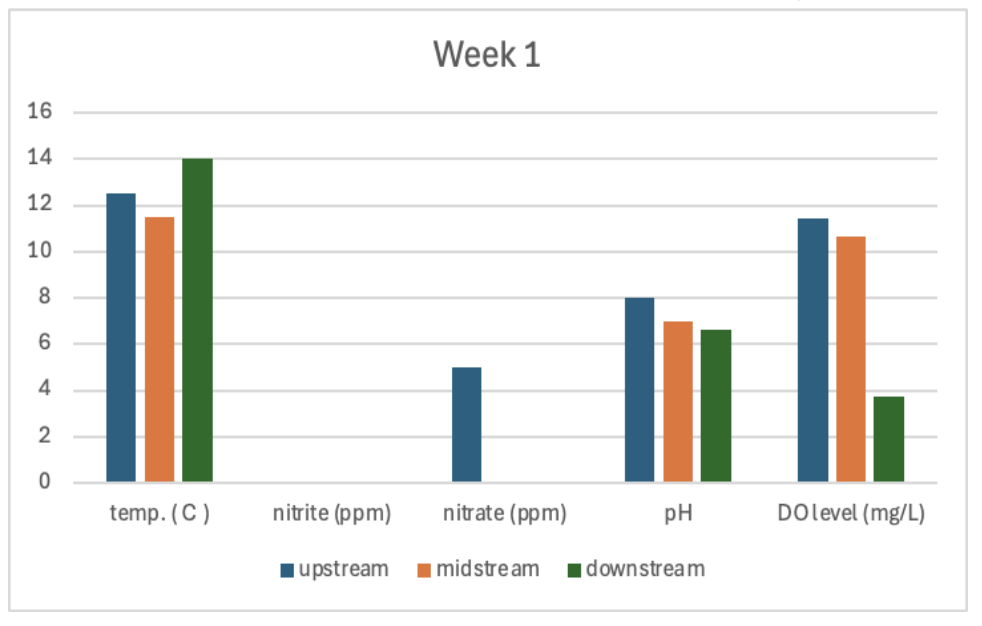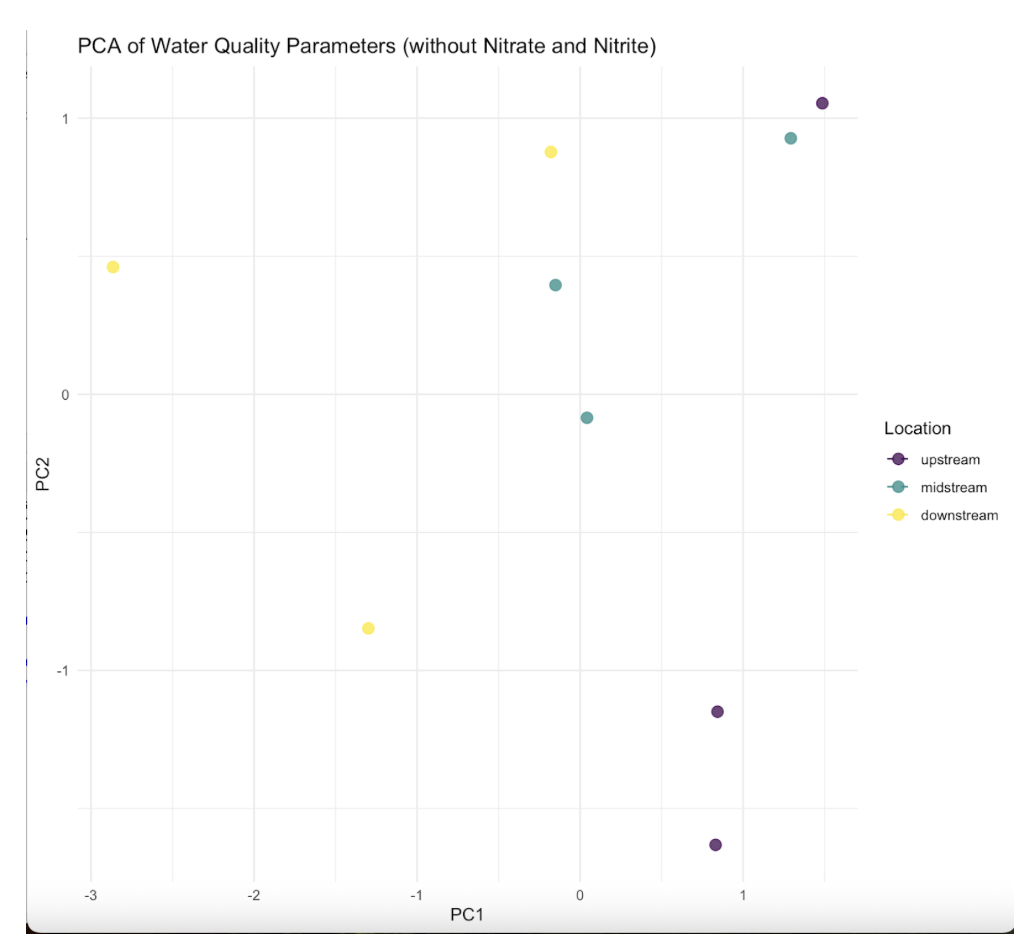Analysis of Water Properties Upstream to Downstream of Big Chico Creek
By Olivia Lane and Paula Toledo
Contact: oblane@csuchico.edu ptoledoortega@csuchico.edu
California State University, Chico students Olivia Lane and Paula Toledo conducted a spring semester-long experiment in their Field Ecology course, BIOL 484W. This Project consisted of analyzing the water quality upstream, midstream, and downstream to determine any variations in chemical concentrations and water flow properties. The 3 different sites used in the experiment are along Big Chico Creek, which originates from Colby Mountain, spans about 45 miles and its the largest river in Butte County. They investigated the physical and chemical properties across the downstream, midstream, and upstream regions. We were also in collaboration with another group to see how water properties in these same areas affect the macroinvertebrates in each area. Our locations involve our midstream area on Chico State campus, Big Chico Creek access on River Rd as our downstream, and Upper Bidwell as our upstream location.
Our main question was “ How does upstream, midstream, and downstream change the water properties within Big Chico Creek?” We hypothesized that upstream water properties exhibit more favorable conditions, characterized by lower concentration of chemicals ( nitrate, nitrite, pH) and higher levels of dissolved oxygen.
Using a freshwater testing kit, we tested for properties such as nitrate, nitrate, and pH levels in the water. As well as using a water thermometer to test temperature and a DO meter to test for the presence of dissolved oxygen in the water.
Right wearing green: Paula Toledo, Left wearing Black: Olivia Lane
Upper Bidwell ( Upstream) Location
After three weeks of gathering data and anazlying, We expected the water properties downstream would contain higher concentrations of chemical properties, lower dissolved oxygen levels, and reduced pH compared to upstream water properties which were expected to contain more favorable results because it was less affected by pollution from external sources.
By observing the table results, they concluded, the River Rd. ( downstream) location did have slightly higher or more equal concentrations of the tested chemicals ( Nitrite, Nitrate, pH). For week 2 table, downstream had lower dissolved oxygen levels compared to upstream and midstream while maintaining a slightly lower pH level. By observing the results, the data slighty rejects the null hypothesis that downstream will contain higher tested chemical concentrations, lower dissolved oxygen levels, and reduced pH.
PC1 demonstrates the relationship to DO levels and PC2 is pH. From the data it was noticeable that there was a relationship of temperature affecting Do and pH levels. Their midstream and upstream locations were heavily affected by the DO levels at our sites and downstream was more affected by pH.





